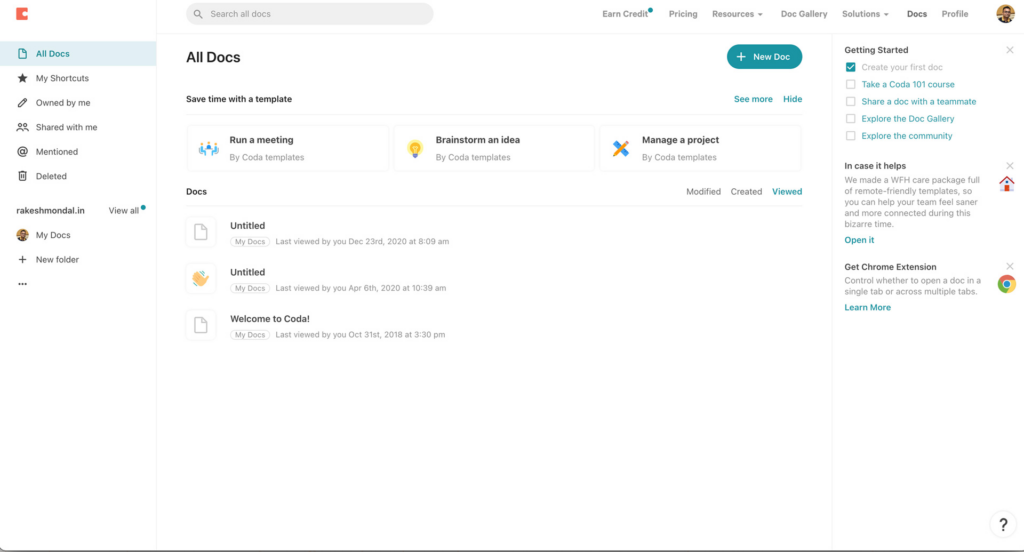Ever wondered about companies that suddenly pop up out of nowhere with disruptive technology? These are often ‘stealth startups’, a unique breed of businesses operating in secrecy until their grand debut.
In this blog post, we will shed light on the intriguing world of these undercover ventures – their strategies, reasons for choosing stealth mode, and notable success stories. Let’s unravel the enigma of stealth startups!
Key Takeaways
- A stealth startup is a company that operates in secrecy and keeps details about its product or services hidden until its official launch.
- Stealth startups choose to operate in secret to protect their new technology from competitors who might steal or copy their ideas.
- Operating as a stealth startup allows companies to refine and perfect their products without outside interference, build anticipation for the launch, and establish themselves as innovative players in their industry.
- Some successful examples of stealth startups include Mist Systems, Velo3D, Coda, Proprio Vision, and Koverse.
Definition of a Stealth Startup
A stealth startup is a company that operates in secrecy, concealing details about their product or services and maintaining a low profile until their official launch.
A company that operates in secrecy
A stealth startup stays quiet about what it does. This type of company works in secret. It hides details about its products or services from others. The public doesn’t know much until the big day comes.
That is when they make their first product launch official. A stealth startup can keep a hidden profile for many reasons. One main reason is to keep new ideas safe from rivals who might copy them.
Concealing details about their product or services
Stealth startups keep all details about their work hidden. They do this to stop others from knowing what they are up to. It is like a cloak of secrecy around the company. Nobody knows what product or service they are creating.
This action helps them stay safe from spies and rivals. These firms want no one to steal their ideas until they are ready for the big display. This way, stealth startups can shock everyone with something new and great at their public launch.
Maintaining a low profile until their official launch
Stealth startups stay quiet until their big launch. They keep all details about their product or service a secret. This helps to build up interest and excitement for the release. It also keeps rivals guessing about what they are doing.
Snapchat and Uber did this before they became famous names in tech.
Reasons for Going Stealth
Stealth startups have several reasons for operating in secrecy, including protecting new technology, preparing for a grand debut, and avoiding distractions and competitors.
Protecting new technology
A stealth startup chooses to operate in secrecy mainly for the purpose of protecting their new technology. By keeping their innovations under wraps, these startups can prevent competitors from stealing or copying their ideas.
This allows them to maintain a competitive advantage and ensure that they have something unique to offer when they finally launch their product or service. Operating in stealth mode also gives them time to refine and perfect their technology without outside interference or premature judgment from the public.
Examples like Snapchat and Uber illustrate how this strategy can pay off in terms of market impact and success.
Preparing for a grand debut
Once a stealth startup has completed its product development and is confident in its offering, it begins preparing for a grand debut. This involves carefully planning the launch strategy to create maximum impact and generate buzz among potential customers and investors.
The startup may leverage various marketing tactics such as social media campaigns, press releases, influencer partnerships, and targeted advertisements to build anticipation before officially unveiling their product or service.
By strategically timing their grand debut, startups aim to capture the attention of their target audience, secure early adopters, and establish themselves as innovative players in their industry.
Avoiding distractions and competitors
Stealth startups choose to operate in secrecy because it helps them avoid distractions and competitors. By keeping their plans under wraps, they can fully concentrate on developing their product or service without outside interference.
This allows them to stay focused and make progress efficiently. Additionally, operating in stealth mode prevents competitors from gaining valuable information about the startup’s innovations and strategies, giving the stealth startup a competitive advantage when they eventually launch.
Examples of Successful Stealth Startups
Some successful examples of stealth startups include Mist Systems, Velo3D, Coda, Proprio Vision, and Koverse. Read on to learn more about their strategies for operating in secrecy and achieving success.
Mist Systems
Mist Systems is a successful example of a stealth startup that operated in secrecy before its official launch. This company specialized in providing wireless networking solutions for businesses.
They chose to keep their operations hidden from competitors and the public until they had developed their product and secured significant funding. By remaining undercover, Mist Systems was able to refine their technology and make a big impact when they finally unveiled their innovative wireless networking solutions to the market.
Operating as a stealth startup allowed them to maintain a competitive advantage and generate excitement among potential customers.

Velo3D
Velo3D is a stealth startup that is making waves in the tech industry. They operate in secrecy, keeping their product details under wraps until they are ready for a big debut. Velo3D focuses on 3D printing technology and aims to revolutionize the manufacturing process by developing advanced techniques and materials.
By operating in stealth mode, Velo3D can protect their innovative technology from competitors and fine-tune their products before releasing them to the public. This approach allows them to maintain control over press coverage and generate anticipation among potential customers.
With their dedication to advancing 3D printing capabilities, Velo3D has the potential to make significant contributions to the industry once they step out of stealth mode.

Coda
Coda is an example of a successful stealth startup. They operated in secrecy until they were ready to launch their product. Like other stealth startups, Coda wanted to protect their technology and surprise the market with their innovative offering.
By staying hidden, they could focus on refining their product without distractions or premature judgment from the public. This strategy allowed Coda to make a big impact when they finally unveiled themselves to the world.

Proprio Vision
Proprio Vision is one example of a successful stealth startup. This company operated in secrecy until it was ready to make a big impact in the tech industry. By keeping their operations under wraps, Proprio Vision was able to refine its product and avoid premature judgment from the public.
They focused on developing their unique vision technology, which combines artificial intelligence and robotics for surgical procedures. By staying incognito until they had a fully developed product, Proprio Vision was able to generate interest and secure significant funding before their official launch.
Koverse
Koverse is a successful example of a stealth startup. They operated in secret until they were ready to make a big impact in their industry. Koverse hid information from competitors and managed their public image.
Operating quietly allowed them to refine their product before going public, giving them time to develop it fully. While operating as a stealth startup has its pros and cons, Koverse’s decision to remain silent until they were prepared helped them create buzz and generate interest when they finally launched.
Pros and Cons of Stealth Mode
Stealth mode offers benefits such as protecting intellectual property, maintaining anonymity, and exerting control over press coverage. However, it can impede finding product-market fit, limit community support, and hinder fundraising and talent recruitment.
Interested in learning more? Keep reading to dive deeper into the pros and cons of operating in stealth mode as a startup.
Benefits: Protecting intellectual property, anonymity, control over press
Operating as a stealth startup offers several benefits. Firstly, it helps protect the company’s intellectual property from being copied or imitated by competitors. Second, staying under the radar allows startups to maintain anonymity and avoid premature judgment from the public until they are ready for a full launch.
Lastly, operating in stealth mode gives startups control over how their story is shared with the press and allows them to strategically manage their public image.
Drawbacks: Impedes finding product-market fit, lack of community support, limitations on fundraising and talent recruitment
Operating as a stealth startup has its drawbacks. One of the challenges is that it can impede finding the right product-market fit because you’re not actively gathering feedback from potential customers.
Additionally, being in stealth mode may limit community support since you’re not building a public presence or engaging with your target audience. Another drawback is that it can be difficult to attract investors and secure funding without making public announcements about your company.
Lastly, operating covertly may restrict talent recruitment as potential employees might not be aware of your existence or opportunities within your startup. These factors should be carefully considered before deciding to operate in stealth mode.
Conclusion
In conclusion, a stealth startup is a company that operates in secret and keeps details about its product or services hidden until its official launch. This approach allows the startup to protect new technology, prepare for a grand debut, and avoid distractions from competitors.
While there are pros and cons to operating in stealth mode, successful examples like Snapchat and Uber show that it can be an effective strategy when used wisely. Ultimately, the decision to go stealth depends on factors such as the nature of the product, competition, and overall goals of the startup.
Frequently Asked Questions
1. What is a stealth startup?
A stealth startup is a company that operates in secret, keeping its product or service under wraps until it is ready to launch or make an announcement.
2. Why do some startups choose to be stealthy?
Startups may choose to be stealthy to protect their ideas, gain a competitive advantage, or avoid premature publicity that could attract unwanted attention from competitors or investors.
3. How do stealth startups operate without revealing their plans?
Stealth startups operate by maintaining strict confidentiality within their team, conducting business discreetly, and avoiding public exposure through traditional marketing channels.
4. Are there any disadvantages of being a stealth startup?
Yes, there are potential disadvantages of being a stealth startup such as limited customer feedback during development, difficulty attracting investors without disclosing detailed information, and the risk of losing market share to more visible competitors.
5. When do most stealth startups reveal themselves?
Most stealth startups reveal themselves when they have achieved significant milestones in product development or securing investments and partnerships that can help them successfully enter the market.



